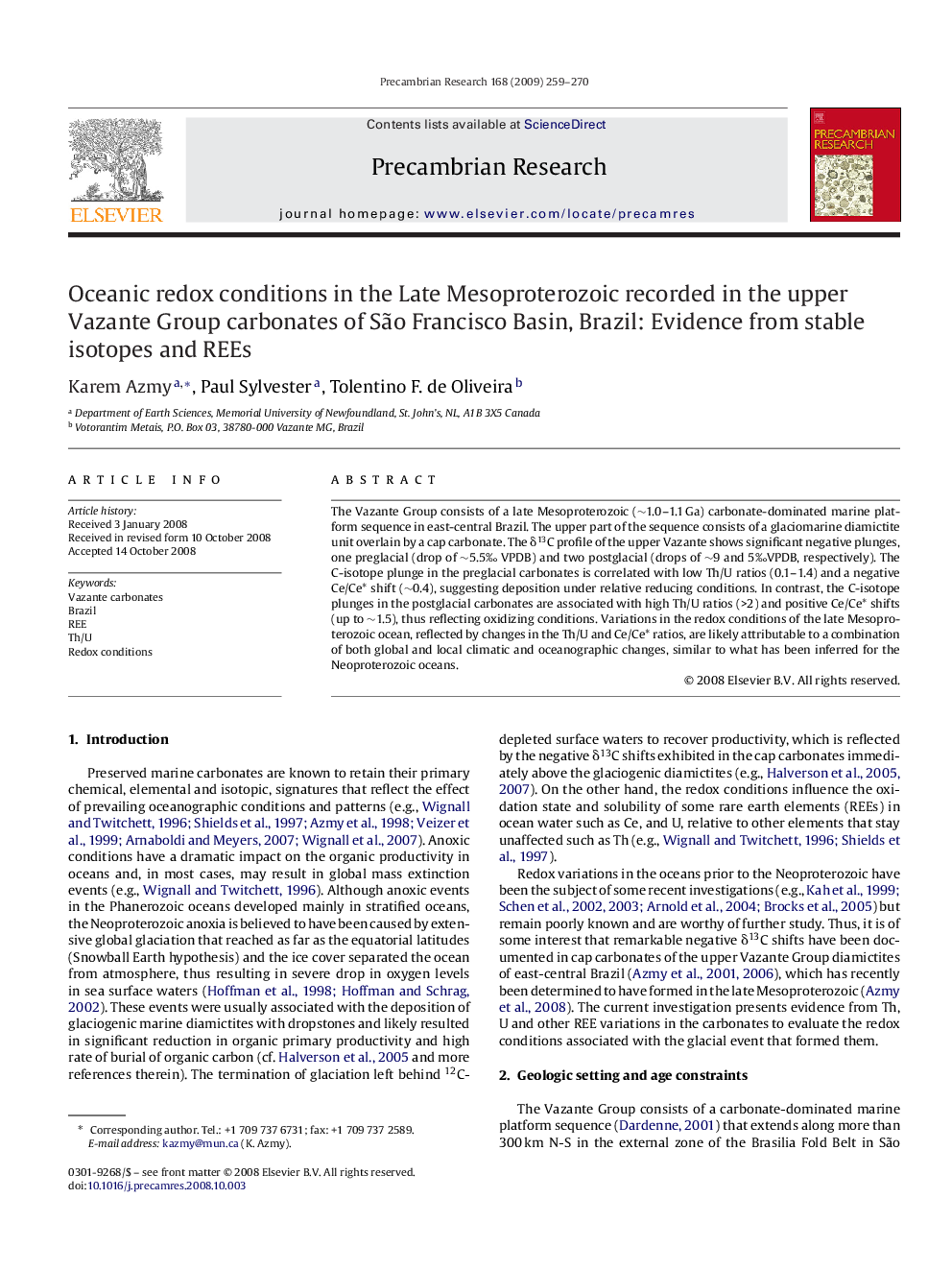| Article ID | Journal | Published Year | Pages | File Type |
|---|---|---|---|---|
| 4724239 | Precambrian Research | 2009 | 12 Pages |
Abstract
The Vazante Group consists of a late Mesoproterozoic (â¼1.0-1.1 Ga) carbonate-dominated marine platform sequence in east-central Brazil. The upper part of the sequence consists of a glaciomarine diamictite unit overlain by a cap carbonate. The δ13C profile of the upper Vazante shows significant negative plunges, one preglacial (drop of â¼5.5â° VPDB) and two postglacial (drops of â¼9 and 5â°VPDB, respectively). The C-isotope plunge in the preglacial carbonates is correlated with low Th/U ratios (0.1-1.4) and a negative Ce/Ce* shift (â¼0.4), suggesting deposition under relative reducing conditions. In contrast, the C-isotope plunges in the postglacial carbonates are associated with high Th/U ratios (>2) and positive Ce/Ce* shifts (up to â¼1.5), thus reflecting oxidizing conditions. Variations in the redox conditions of the late Mesoproterozoic ocean, reflected by changes in the Th/U and Ce/Ce* ratios, are likely attributable to a combination of both global and local climatic and oceanographic changes, similar to what has been inferred for the Neoproterozoic oceans.
Keywords
Related Topics
Physical Sciences and Engineering
Earth and Planetary Sciences
Geochemistry and Petrology
Authors
Karem Azmy, Paul Sylvester, Tolentino F. de Oliveira,
